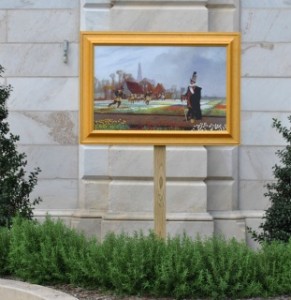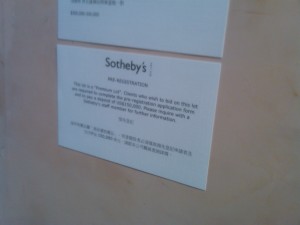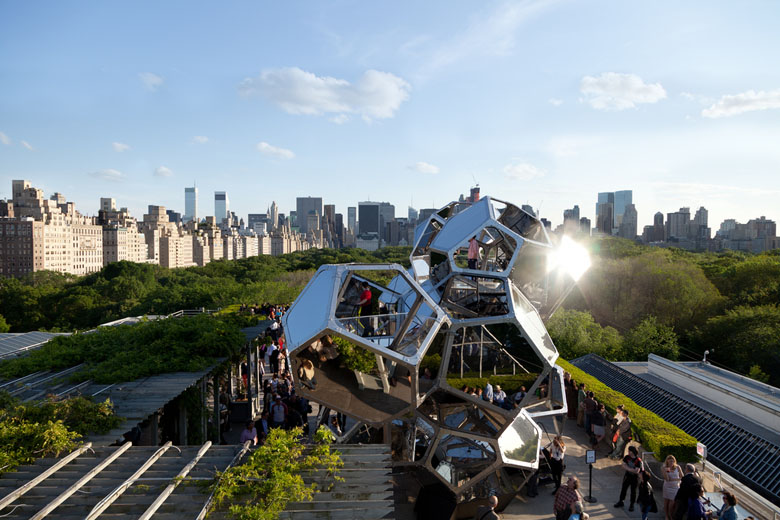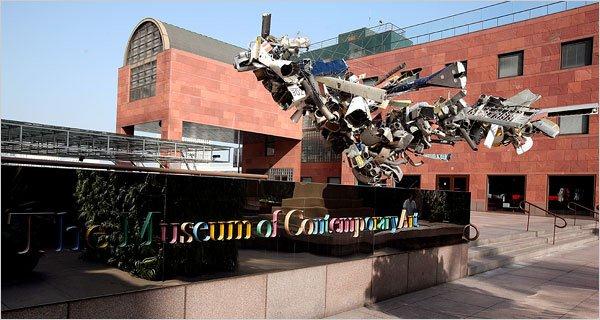It’s a trend, by the old definition, if there are three examples. And this is a good one.
 Following Inside|Out at the Detroit Institute of Arts and Art is Everywhere at the Delaware Art Museum, the Walters Art Museum in Baltimore is planting high-quality reproductions of paintings from its permanent collection in parks, public and commercial venues around the city. The Walters calls its exhibition Off the Wall. (My last post on the DIA/Delaware efforts is here.) And each museum has had its own little twist.
Following Inside|Out at the Detroit Institute of Arts and Art is Everywhere at the Delaware Art Museum, the Walters Art Museum in Baltimore is planting high-quality reproductions of paintings from its permanent collection in parks, public and commercial venues around the city. The Walters calls its exhibition Off the Wall. (My last post on the DIA/Delaware efforts is here.) And each museum has had its own little twist.
Although Off the Wall doesn’t begin officially until November, the Walters says it has had a “soft launch” of three paintings. Another 20 will go up between the last week of September and the middle of October, and this display will be officially launched in November. Those reproductions will remain in place through next April; then the Walters will scramble them, moving each one to a new location, where they will remain on view officially from July through December 2013.
 I’m not sure why installation takes so long, but the official launch date is important because the Walters publishes a map of all the locations, when all 23 are up. The first phase map can be seen here.
I’m not sure why installation takes so long, but the official launch date is important because the Walters publishes a map of all the locations, when all 23 are up. The first phase map can be seen here.
Among the first repro paintings (in “period-correct” frames) to go up was Pierre Puvis de Chavannes’s Hope, on view at Patterson Park (above left) and Jean-Leon Gerome’s The Tulip Folly (right), on view at City Hall. Each reproduction is accompanied by a label describing the work and a QR code that Smartphone users can scan for a more detailed description, which is available on the Walters’ online collection.
“Walking past a beautiful painting while ‘out and about’ in the area will be a pleasant surprise for everyone,†the museum’s director, Gary Vikan said in a press release. He views this initiative as bringing art to the people.
The Walters is trying to lighten up with these pop-up paintings, stationing some in catchy places — Syria, The Night Watch, “a moonlit scene of ferocious lions among ancient ruins painted in 1880” by Briton Rivière, will go near the lion cages at the Maryland Zoo in Baltimore. The Tulip Folly, about the infamous tulip bubble, is at City Hall on purpose.
Another bit of whimsy, says the museum’s director of marketing Matt Fry, is that “We are providing our community partners with printed treasure maps, featuring all 20 artworks and their corresponding locations and hope to explore fun tie-ins such as bicycle tours, geocaching and ‘check-ins’ on social media platforms. We encourage people to patronize the businesses hosting the reproductions, to enjoy those displays, and to visit the originals at the Walters the next time they’re in the Mt. Vernon neighborhood.â€
Fry came to the Walters from the Detroit Institute, and brought the idea with him, according to an article last week in the Baltimore Sun. His quote above sets up the museum’s challenge very well: this shouldn’t be seen as too commercial and it works only if it prompts new visitors to the museum, or at least reminds past visitors that it’s time to return.
Still, I suspect this idea will catch on elsewhere. Maybe it already has.
Photo Credits: Courtesy of the Walters Art Museum
Â




